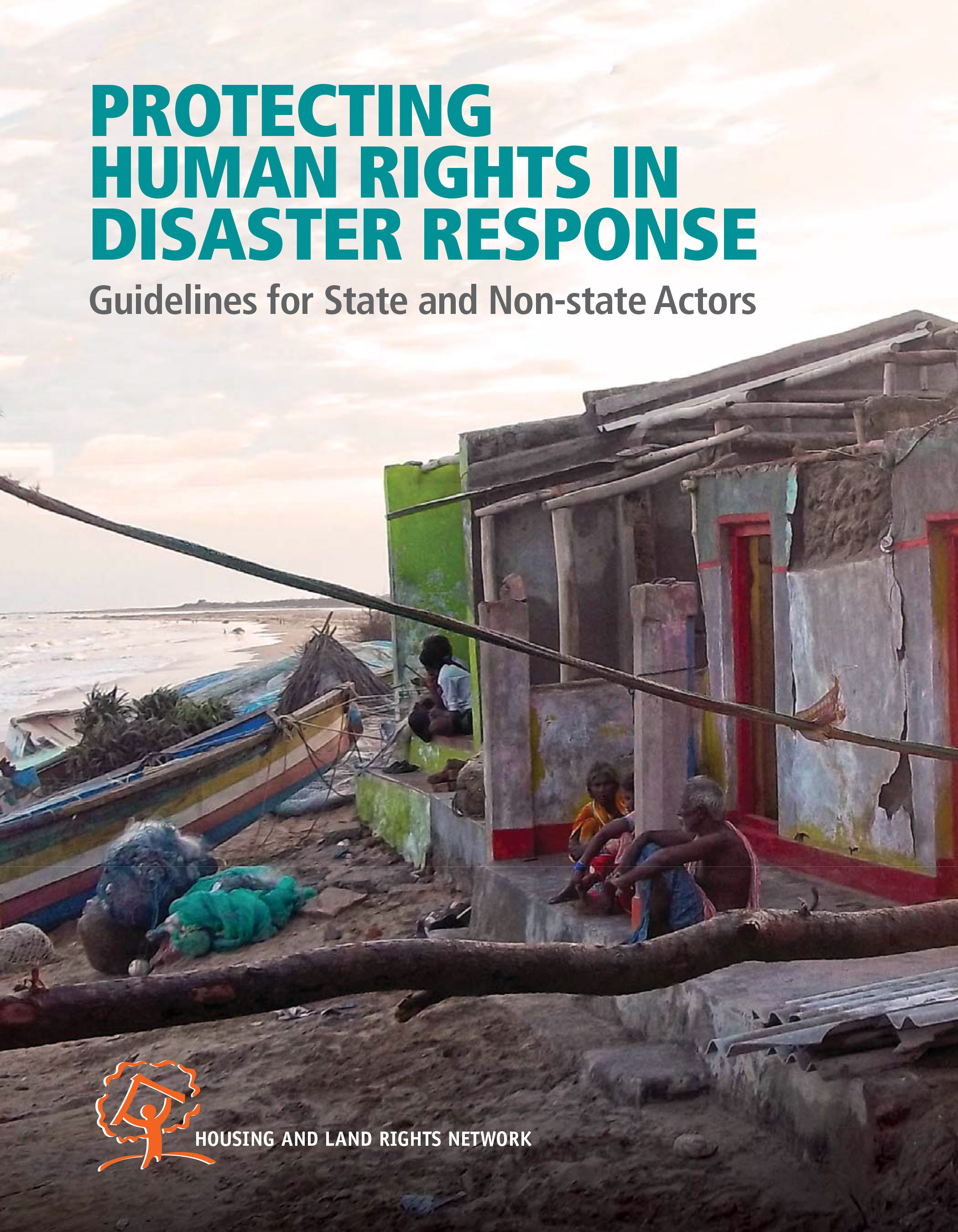
Introduction
Disasters, including those resulting from and
exacerbated by the effects of climate change and over-exploitation of natural
resources, affect countries around the world. According to a report by the
Internal Displacement Monitoring Centre, 22 million people were displaced in
2013 by disasters brought on by natural hazard events. Asia is the worst affected
region, with 19 million people or 87 per cent of the global total displaced
during 2013. The report states that although both wealthy and poorer countries
are affected, ‘developing’ countries bear the brunt, accounting for more than
85 per cent of the displacement.
The consequences of these disasters are
generally severe and long lasting. Certain individuals, groups, and
communities—on account of their existing marginalisation and vulnerability—
disproportionately suffer the impacts of disasters, both in the immediate aftermath
and in the long-term recovery process. These include people living in high risk
areas, such as small islands, mountainous regions, high seismic zones, or along
the coast; low income groups; those living in inadequate housing conditions;
homeless, landless, and internally displaced persons; minorities; historically
discriminated communities, such as Dalits/members of Scheduled Castes;
indigenous and tribal peoples; women; children; persons with disabilities, and
older persons.
The fundamental human rights that are violated
in post-disaster situations include the rights to adequate housing, food, water
and sanitation, health, work/livelihood, land, security of the person and home,
information, participation, and education. Violations of these human rights are
oft en exacerbated when relief and rehabilitation measures are not planned and
executed from a human rights perspective; are not timely, adequate, and
appropriate; and do not take into account the specific needs and concerns of
women, children, and other marginalized and vulnerable groups within affected
communities.
The onus, therefore, is on nation states and
humanitarian organizations to ensure human rights based disaster risk
reduction, relief, and recovery. In the aftermath of a disaster, comprehensive
and sustained efforts are needed to safeguard the human rights of the affected
population; and, to ensure that relief, rehabilitation, and reconstruction are
carried out in a gender-sensitive, culturally appropriate, non-discriminatory,
participatory, and inclusive manner. Disaster preparedness and rehabilitation
are internationally recognized human rights that should be upheld by all
involved agencies – national and international. Disaster response mechanisms and
interventions must guarantee respect for the dignity and human rights of all
survivors, especially the most marginalized.
Housing and Land Rights Network (HLRN), India,
has compiled these guidelines for state and non-state actors to follow in the
various stages of post-disaster relief, rehabilitation, reconstruction, and
recovery. This document also includes a short section on disaster preparedness,
risk reduction, mitigation, and protection, as they are important elements of a
comprehensive human rights framework for disaster management. The
recommendations presented here are derived from HLRN’s extensive work—including
fact-finding missions, research, and consultations— carried out after the 2004
Indian Ocean tsunami. They are based on international law, human rights
standards, and guidelines from the United Nations (UN), and include specific
provisions of the Inter-Agency Standing Committee’s Operational Guidelines on
the Protection of Persons in Situations of Natural Disasters, 2011 (IASC Operational
Guidelines), which clearly establish the rights of survivors as well as the
duties of responsible agencies and operational procedures to be followed in
disaster response.
Housing and Land Rights Network strongly
believes that a human rights-based approach, incorporating the principle of
‘indivisibility of human rights,’ should underlie all disaster preparedness,
relief, and rehabilitation work. Reconstruction and recovery efforts must aim
to promote durable solutions by addressing the long-term needs and concerns of
individuals and communities, including mitigation of the risk of future
disasters.
Housing and Land Rights Network hopes that all
national and international, state and non-state actors involved in all phases
of disaster management—preparedness, relief, and recovery—will implement these
recommendations, and ensure the respect, protection, and fulfilment of the
human rights of all affected persons and communities, as stipulated by
international human rights and humanitarian law.
* To
download the publication, click here.
